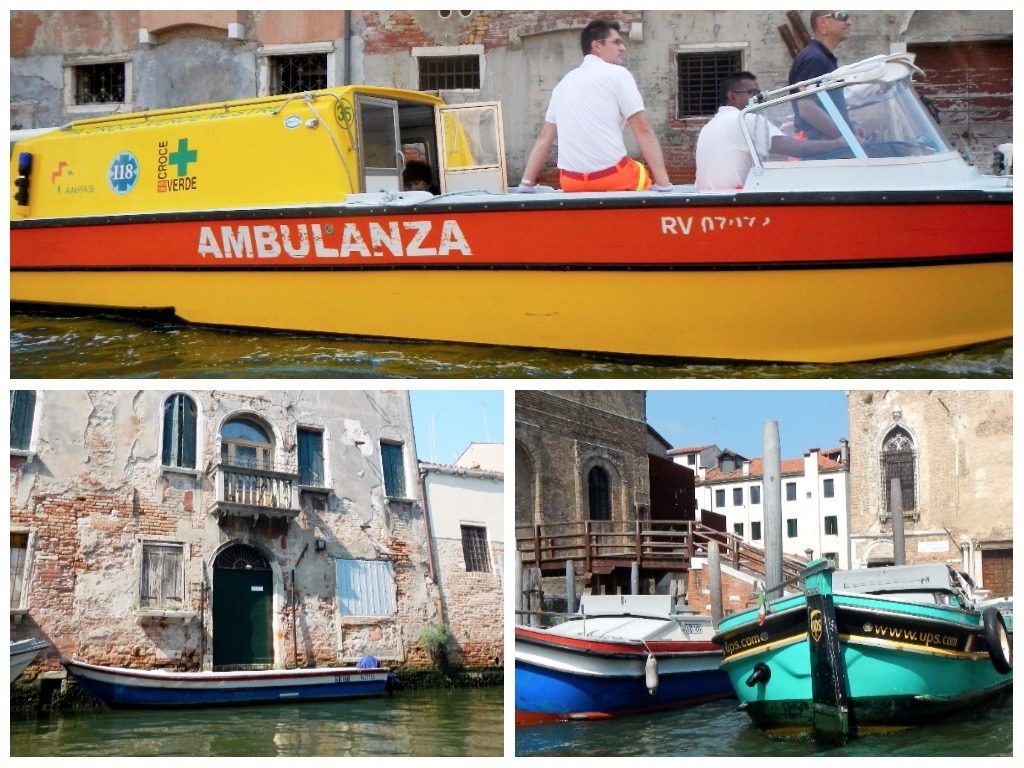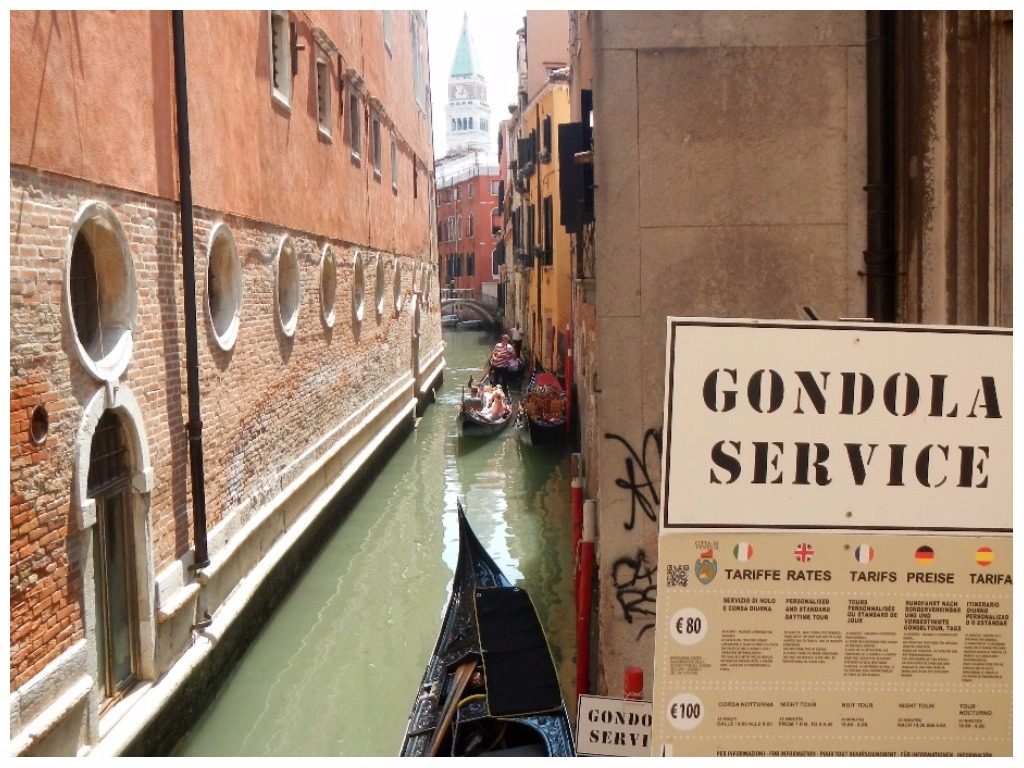Venice: a self-made city if there ever was one.
There wasn’t even any land there where the Venetians decided to settle. They drove wooden poles in mud until they seemed quite firm, then topped those poles with planks to evenly distribute the weight of the foundations and marble/brick buildings. Surprisingly it worked (some are still crooked, but hey).
A city made in the sea needed no walls because the water protected its citizens. There were no roads to Venice until modern days, so only by boat could one access the area. Today, it retains its boats-only legacy, and though there’s a road for cars and trains, you can only drive/train in as far as the main square. With no real streets, and limited sidewalks, boats (and your feet) are the only ways to get around. Families own boats instead of cars, and kids around here learn to row or steer engines rather than how to drive.

We took a lesson from Row Venice to learn how to maneuver a traditional (and nowadays, quite rare) batelina, a stable, all-wood boat. We learned the very basics of voga alla veneta, the unique style of stand-up rowing the Venetians developed centuries ago and that is still used today by the iconic gondoliers.
It is much harder than it looks.
This is the basic stroke for rowing a prua (at the prow).
It’s basic rowing here, the flat side going parallel to the water above it, rotating 90 degrees so it can slice down into it, and then straight back to get pull through the water. Then the oar comes up, rotate 90 degrees again so it moves over the water efficiently and again, and again. The oar has a ridge on the side facing up/the back of the boat (you can see it marked with a purple tip). This side must stay facing up/the back of the boat to get any power when rowing.
This is (sorta) how to steer at the stern, a poppa:
Not that it looks easy, but it’s certainly harder than I imagined! The canals can get narrow in areas, and then there’s the canal traffic you need to watch out for. Our guide/instructor told us the only real way to learn is to feel the water. To steer, you are to make a sorta figure 8 shape, shallow-ly, and without ever lifting the paddle all the way from the water. She kept her hand on the forcola (oarlock/intricately carved wooden piece where the paddle goes) just in case I lost control of the oar.
Also, those were the instructions I deduced. The only things she actually told us were to keep the oar in the water at all times when steering, and not to go too deep. I’m still not entirely sure how to control which direction the boat goes…

“Oarlock” seems like a misnomer; nothing about it locks the oar in place—that’s the rower’s job/skill.

It was still a blast, but we’d need lots of practice if we wanted to become gondoliers. Rowing in the canals gave us a boats-eye view of Venice and a newfound respect for the pros.
Here’s a video of the pros at work:
 P.S. The sign below shows the government regulated prices for a gondolier ride: €80 for 40 minutes, and after 7pm, it increases to €100 for 40 minutes (maximum of 6 people per ride), and lines can be quite long. Sure it’s (possibly) less romantic, but getting a private 90-minute lesson cost waaay less than the ride from a pro!
P.S. The sign below shows the government regulated prices for a gondolier ride: €80 for 40 minutes, and after 7pm, it increases to €100 for 40 minutes (maximum of 6 people per ride), and lines can be quite long. Sure it’s (possibly) less romantic, but getting a private 90-minute lesson cost waaay less than the ride from a pro!


Great lesson ?
Sounds fun! What a fantastic way to experience Venice.